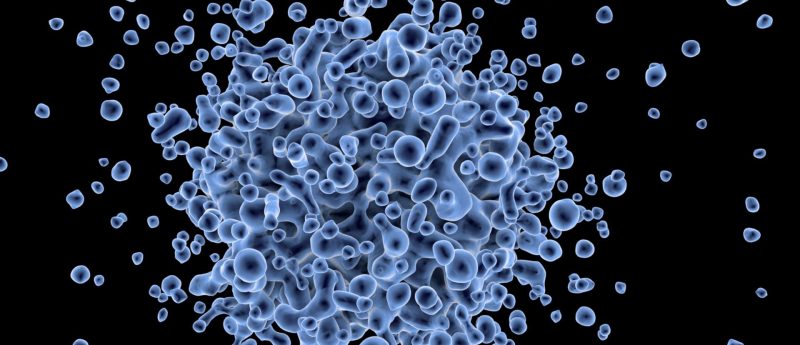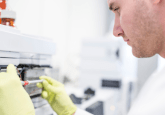Nanomechanical mass spectrometer used to measure large virus capsids

Researchers at the French Alternative Energies and Atomic Energy Commission (Gif-sur-Yvette, France) have used a nanomechanical mass spectrometer to accurately measure the mass of a large 105 MDa DNA-filled viral particle. This new system helps bridge the mass gap from MDa to GDa, which had previously been challenging to measure by conventional mass spectrometry methods.
Despite rapid technological advances in mass spectrometry systems since their initial development in 1919, commercial instruments are currently only able to measure polymers and proteins as large as 1 MDa, whilst modified mass spectrometers can measure up to tens of MDa. On the other hand, viruses and many large biomolecule complexes are in a mass range that is challenging to measure with conventional methods due to the slow deflection of ions towards the detector.
To overcome this issue, researchers developed a new system able to detect single molecules at a mass range missing from the suite of common mass spectrometric techniques. “We tried to depart from the classical design of a mass spectrometer to find something that was really suited to deliver particles to a nanomechanical detector,” explained Christophe Masselon (French Alternative Energies and Atomic Energy Commission).
In the experiment, published in Science, a solution of DNA-filled T5 viral particles was continuously ionized by nano-electrospray ionization, mixed with helium gas then flown through an aerodynamic lens which focuses the nebulized molecules into a tight beam based on the particles’ inertia. As the solution travels through the low pressure chamber, helium rapidly diffuses whilst larger particle diffuse more slowly. An array of 20 nanomechanical resonators fixed onto a silicon chip was then tailored to detect the beam for this mass range.
The researchers measured the mass of hundreds of DNA-filled viruses and found the normalized distribution of measured masses to be 108.4 MDa. “This value is slightly higher than the calculated molecular mass of 105.4 MDa, perhaps because of salt introduced during ionization,” explained Masselon.
Michael Roukes (California Institute of Technology, CA, USA), commented: “The aerodynamic lens in this system is a nice way to introduce large species, particularly exotic ones like viruses, into a mass spectrometer.” In the future, this new system can be easily modified to use other types of nanomechanical detectors, such as ones that detect particle shape, size and stiffness.
Sources: Dominguez-Medina S, Fostner S, Defoort M et al. Neutral mass spectrometry of virus capsids above 100 megadaltons with nanomechanical resonators. Science 362(6417), 918-922 (2018); www.chemistryworld.com/news/mass-spec-goes-massive-weighing-huge-virus-particles/3009785.article






